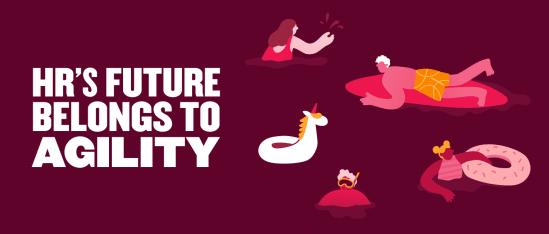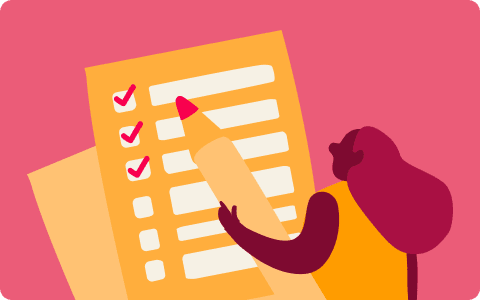Work is changing—fast.
Fixed job roles, rigid hierarchies, and set-in-stone processes can’t keep up in 2025.
That’s why Gartner puts ‘redesigning work’ at the top of HR’s to-do list.
According to Gartner, 87 percent of HR leaders say shifting business needs now demand ongoing transformation. But at the same time, 61 percent of talent management leaders admit that the pace of change is outstripping their capacity.
The reality is that 23 percent of global jobs are expected to change in the next five years, thanks to AI and industry transformation. So, it’s clear that traditional structures aren’t built for what’s ahead. But that doesn’t mean starting from scratch. It means redesigning for flexibility and resilience.
With a skills-first, outcome-focused approach (and the right tools), you can build teams that flexibly adapt as fast as your business.
Let’s look at what redesigning work means and the steps you can take.
The forces driving workforce design
Several significant shifts are pushing organizations to rethink how they’re structured and how they best use their people. The Gartner report shows:
1. Business volatility is the new normal
Growth is still the big goal for leaders, with 79 percent of CEOs planning to have new post-crisis business strategies ready by the end of 2025. Unpredictable markets, geopolitical change, new regulations, and rapid tech adoption are testing those strategies, leaving little room for slow decision-making.
2. The skills landscape is in constant motion
Gartner predicts that 23 percent of jobs will change in the next five years due to industry transformation, including AI. Skills are now distributed and applied very differently, and that shift means the old way of locking people into narrow job descriptions just won’t cut it.
3. Team expectations have grown louder
Today’s talent isn’t just looking for a paycheck. In fact, 62 percent of candidates say they only apply for roles that meet most of their employee value proposition requirements—flexibility and development opportunities.
4. The pressure is on HR to keep up
Most HR leaders (87 percent) agree that shifting business needs require continuous transformation. This is not just a one-off change project—it’s an ongoing process that requires the right tools and culture to succeed.
From roles to outcomes
For decades, employers have anchored how work gets done in job descriptions. They have defined responsibilities, set reporting lines, and determined how success is measured. But fixed roles can quickly feel restrictive in a world that changes by the month.
Organizations are increasingly shifting their focus from what a role is to what it’s there to achieve.
In practice, instead of asking “Who owns this task?” the question becomes “What outcome do we need, and who’s best placed to deliver it?”
A slight shift, right? But it’s effective. This mindset opens the door to:
- Cross-functional collaboration. Teams form around priorities, not departments.
- Faster decision-making. Clear outcomes make it easier to align and move forward.
- Greater impact. Success is measured by results, not just tasks completed.
It’s a slight change in language, but a huge one in culture. By making outcomes the north star, you can build a more flexible, responsive organization without losing sight of the bigger picture.
The skills-first approach
Agile organizations don’t define people by titles. They focus on skills and how to use them where they’ll make the biggest difference.
A “skills-first” approach means looking beyond traditional role boundaries and asking: What capabilities do we already have, and how can we use them where they’re most needed?
This shift does three important things:
- Makes hidden talent visible. Skills mapping and tagging reveal capabilities that might be tucked away in unexpected places.
- Speeds up redeployment. When priorities change, you can quickly move people into new projects without waiting for lengthy hiring processes.
- Builds resilience. You’re less reliant on specific individuals in specific roles and more able to adapt as needs evolve.
For example, if a product launch needs a burst of marketing power, a skills-first organization can draw on talent across departments. This brings together the right mix of expertise in days, not weeks.
By focusing on skills, you tap into the true potential of your workforce. When you connect that approach to real-time data, you can instantly see where your strengths are, where the gaps lie, and how to close them.
Dynamic team models
If skills tell you what talent you have, dynamic teams show you how to use it.
Instead of keeping departments static, organizations build dynamic teams around priorities and business needs. For example, marketing, product, sales, and operations might come together for a specific project and then shift again as goals emerge, offering fresh opportunities and challenges.
It’s less “org chart” and more “pop-up shop.”
Here’s why it works:
- Flexibility. Teams can scale up, scale down, or shift focus around the business’s growing demands.
- Speed. You assemble the right mix of skills in no time, as soon as a new challenge or opportunity appears.
- Engagement. People get to work on varied projects, stretch their abilities, and see their impact.
With the proper visibility into skills and capacity, HR leaders can turn dynamic teams into a standard way of working, rather than reacting to emergencies.
Building agility with the right tech
Agility depends on the right HR tech. But over half of HR leaders say their current tools don’t meet today’s or tomorrow’s business needs—and too many platforms sit underused. To move past this, HR needs technology that actively drives workforce agility.
The right people platform empowers HR leaders to:
- Design modular structures. Build and adjust team configurations without months of planning.
- Tag and track skills. Create a living skills library that shows precisely what capabilities you have and where they are.
- Run “what if” scenarios. Model different team structures, priorities, or workforce changes to see the impact before you make the call.
- Reconfigure teams quickly. Move people into the right place at the right time, with minimal disruption.
At the center of it all, ensure there is a people data engine—a single source of truth for skills, roles, and capacity. With the right HR tech, leaders can enhance efficiency and make agile decisions with clarity and confidence.
Recommended For Further Reading
Making agility measurable
Agility sounds great in theory, but HR leaders know they manage what they measure. To prove the value of a more flexible, skills-first organization, you need clear, visible metrics.
Some of the most useful include:
- Time to redeploy talent. How quickly can you move people into new roles or projects.
- Project turnaround time. The speed from idea to delivery.
- Skill gap closure rate. How fast can you address missing capabilities.
- Team member adaptability. Engagement and confidence in handling change.
A strong people platform turns these into live dashboards so you can see exactly how your teams are performing and track improvements over time.
A simple roadmap to redesign
You don’t need to flip your organization on its head overnight. Start small, prove the value, and scale from there. Try these steps to get started:
- Audit your current state
- Map workflows, roles, and skills
- Identify bottlenecks and underused capabilities
- Define the outcomes that matter most
- Build your skills inventory
- Pilot a modular team structure
- Adopt technology that scales the approach
Small, deliberate steps create momentum, making transformation stick.
The future belongs to agility
In 2025, standing still isn’t an option. Markets will keep shifting, skills will keep evolving, and team expectations will keep rising.
The organizations that thrive will be the most adaptable ones.
With the right mindset and platform, HR leaders can turn agility from a buzzword into a daily reality. When your teams are ready for anything, you’re shaping change—and leading it!
Key takeaways
- Agility is HR’s new priority. Gartner HR research shows that 87 percent of HR leaders say business volatility demands ongoing transformation, making agility the foundation of modern HR strategies.
- Traditional roles can’t keep up. Fixed hierarchies and rigid job descriptions limit adaptability. Shifting from role-based to outcome-based work unlocks speed, collaboration, and greater impact.
- Skills-first is the future. Mapping and mobilizing skills across functions reveals hidden talent, speeds redeployment, and builds resilience against rapid market and technology shifts.
- Dynamic teams drive results. Modular, cross-functional teams scale up and down as business needs evolve, keeping organizations flexible while boosting engagement.
- The right HR tech enables agility. A modern people platform lets HR leaders tag and track skills, run “what if” scenarios, and reconfigure teams quickly—turning workforce agility into an everyday practice.
- Agility must be measured. Metrics like time to redeploy, project turnaround, and skill gap closure help HR leaders prove the business value of an agile workforce.
- Transformation starts small. By piloting modular teams, building skills inventories, and scaling with supportive HR tech, leaders can redesign work step by step for lasting impact.
- The future belongs to agile HR. With an HR focus on agility, organizations can stay resilient, responsive, and ready for anything in 2025 and beyond.

From Dana Liberty
Dana Liberty is a content manager at HiBob, where she combines her creative writing with performance marketing. In the winter, you’ll find her sitting by the fire with a glass of wine, trying to solve the latest word puzzle (and in the summer, she cuts out the fire, but never the wine and puzzles).

